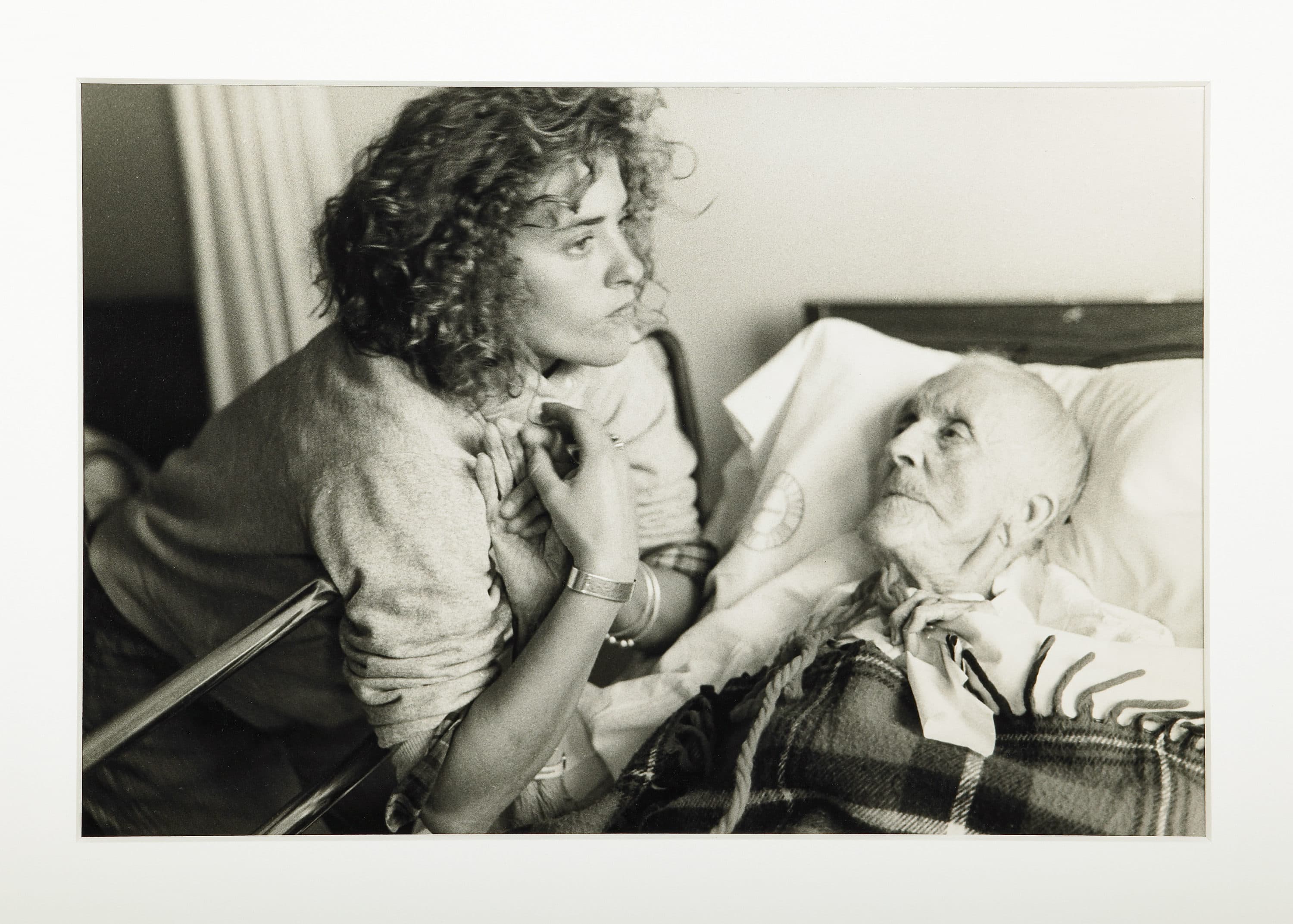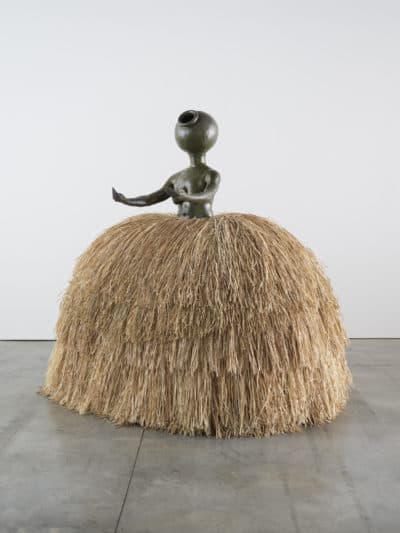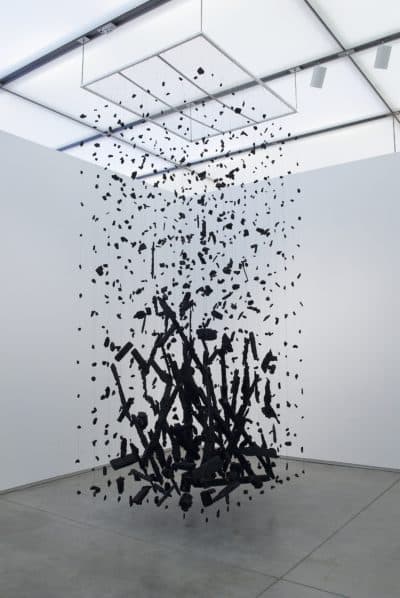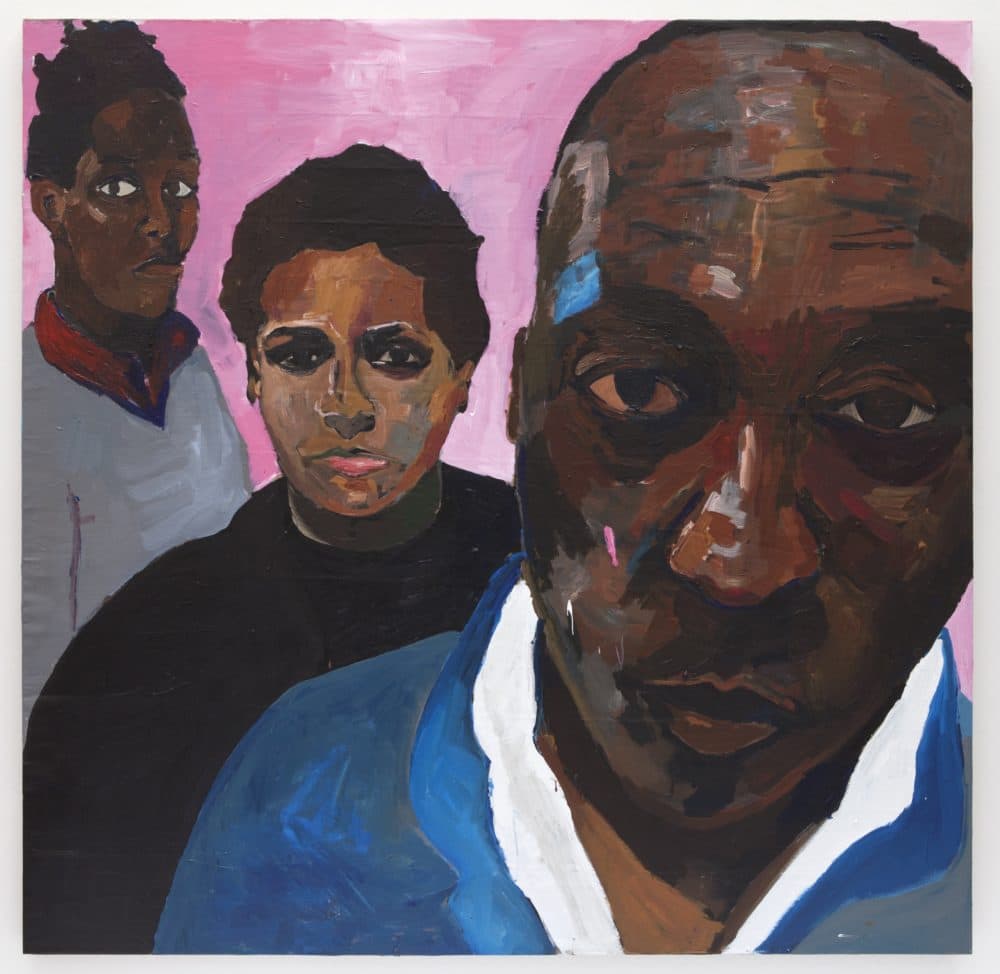Advertisement
ICA Exhibit 'I'm Yours' Tells Stories From Many Points Of View

At a new exhibit opening at the ICA Boston on Wednesday, a sculpture by artist Simone Leigh is one of the first to greet visitors. It is a life-size ceramic female figure with arms outstretched in a gesture of either invitation or supplication. The figure wears a round raffia skirt that might allude to a Southern belle’s crinoline or the roof of a West African dwelling. The head of the figure is actually an open jug recalling the “face jug” folk art of African American enslaved people, but also perhaps referencing women’s roles as the usual bearers of such receptacles.
“It reads almost as an offering or like giving a gift, or perhaps like a welcoming,” says Ruth Erickson, who curated the exhibit along with Eva Respini, Jeffrey De Blois and Anni Pullagura.

The piece, entitled “Cupboard IX,” performs double duty at "i'm yours: Encounters with Art in Our Times." It both welcomes visitors at a pendulous moment in history in which politics, climate and society seem to sway at the edge of some cusp, while also acknowledging that no one knows exactly what that cusp is. Apocalypse or a new age of evolved consciousness? We’ll mark that TBD — to be decided — for now.
“We were thinking about that title — 'i'm yours' — and thinking about speaking from the space of the museum, thinking about the museum as writing stories and making space and making connections, but that are always sort of provisional and in connection with their own time,” explains Erickson.
Art, history and even museum shows are dependent on the zeitgeist of the moment. Narratives and explanations are never static but ever-changing. What is understood as the “truth” of one era is turned on its head in the next. "i'm yours" attempts to reflect today’s multifarious narratives by presenting 35 artists hailing from a range of continents, a mix of ethnicities and a myriad personal experiences. They include well-known names like the late French sculptor Louise Bourgeois, whose work explored, family, sexuality and the body, as well as newer names like LA-based photographer Paul Mpagi Sepuya, whose portrait photography explores queer culture, and Lebanese American photographer Rania Matar, who captures the daily lives of girls and women in both the U.S. and the Middle East. (Matar also teaches at MassArt.)
The show seems to suggest that the old museum canons are melting away, along with rigid and exclusive ways of describing the world. What is left are new narratives and new perspectives that should be regarded as only temporary until events provide a different context. To make this point, ICA curators have constructed seven scenes composed of unfinished gallery walls. On one side of a wall, we see hung artwork, suggesting the story of this moment — on the other side are visible metal studs and plywood suggesting an evolving work in progress.
“It feels like a very unfinished kind of provisional space,” says Erickson. “We were interested in trying to do that through architecture because it feels like such a provisional time. And for visitors who are coming back to the museum, perhaps visiting for the first time, we want the environment to feel changed because it feels like everything has kind of changed.”

Each of the seven spaces in the exhibit bears its own title, intent and emotional tenor. Leigh’s piece “Cupboard IX,” featuring the figure with open arms, stands in a room entitled “Opening Act.” The figure appears to be reaching out to touch visitors who have been mostly out of touch, physically, in this pandemic year. (The ICA will be commissioning Leigh for the U.S. Pavilion at the Venice Biennale in 2022.)
A space entitled “Unbound” includes the piece “Man Without a Country (aka anthropophagist wading in the Artibonite River)” by Dominican American artist Firelei Báez. She uses 225 pages torn from 19th-century academic texts detailing the history of the Caribbean island of Hispaniola as supports for her own hand-drawn illustrations mixing folkloric motifs, the female figure and mythological organisms. Her markings are suggestive of a rewriting of the history of the Caribbean, African and Latin American diasporas.
In a section entitled “What Remains,” we see “Hanging Fire (Suspected Arson),” a sculpture by English artist Cornelia Parker who suspends the charred shards of an actual case of suspected arson on wires in midair. Out of the rubble of a fire, Parker composes a piece that is at once static while filled with explosive action. Also in that room is Colombian artist Doris Salcedo’s “Atrabiliarios” featuring the actual shoes of women abducted and presumed killed during the civil conflicts in Colombia in the 1980s. The shoes are hauntingly poetic, embedded into the wall behind a translucent piece of cow bladder affixed to the wall with surgical thread.
Both pieces, says Erickson, are about loss and destruction and speak to “the sadness that is accompanying our time, and the loss of lives.”
In the section “Material Response,” artists play with the everyday items that we might encounter around the house. (Isn’t that where we’ve all been spending our time these days?) Tara Donovan’s piece “Untitled (Pins)” makes use of a dressmaker’s straight pins to create a perfectly formed, minimalistic cube held together only by static electricity. In a video work entitled “Oil and Sugar #2,” French Algerian artist Kader Attia stacks sugar cubes on a silver platter before covering them with motor oil, causing them to dissolve. The piece evokes the Kaaba, the Islamic holy site that is at the center of the annual pilgrimage to Mecca, but as we witness the sugar dissolving, we are also left to contemplate violence in the Middle East sparked by competition for fossil fuels.

Other stage sets in the exhibit include “Home Again” dedicated to the meaning of domestic space; another, “Monuments to Presence,” includes Louise Bourgeois’ giant “Spider” memorializing her fiercely protective mother; and another room entitled “Looking Out” is dedicated to portraits of all types, ranging from Shepard Fairey’s iconic “Mujer Fatal” to South African artist Zanele Muholi’s portraits of lesbian, gay and transgender folk living in South African townships. In that last room, the viewer can see the namesake of the exhibit, "i'm yours" by LA artist Henry Taylor. In that painting, Taylor is shown with his two grown children. All three figures gaze unabashedly at the viewer.
“You feel like the eyes sort of pierce you, like they really pierce your soul when you're looking at them,” says Erickson.
The work brought together in "i'm yours" — largely pulled from the museum’s permanent collection — is so widely varied it feels in some ways like a general store assortment of contemporary art. And in some ways, that’s the point. In what has been a very strange year of suspension, a time in which old structures and norms seem to have dissolved away, much like the sugar in Attia’s video, the exhibit invites us to use this frozen moment to reflect on both the uneasiness and the opportunity of our time.
"i'm yours: Encounters with Art in Our Times" runs from Nov. 18 to May 23 at the ICA.
